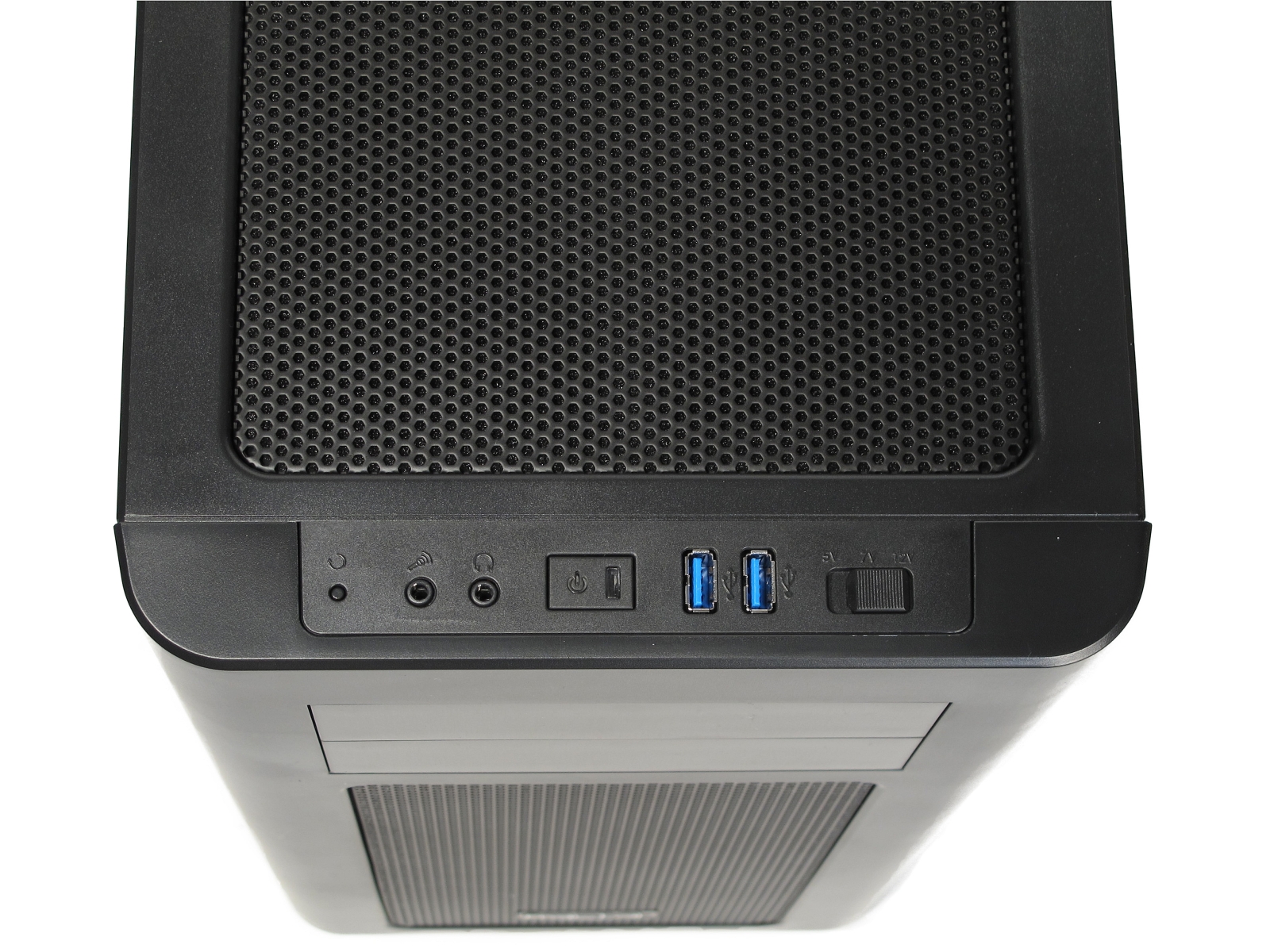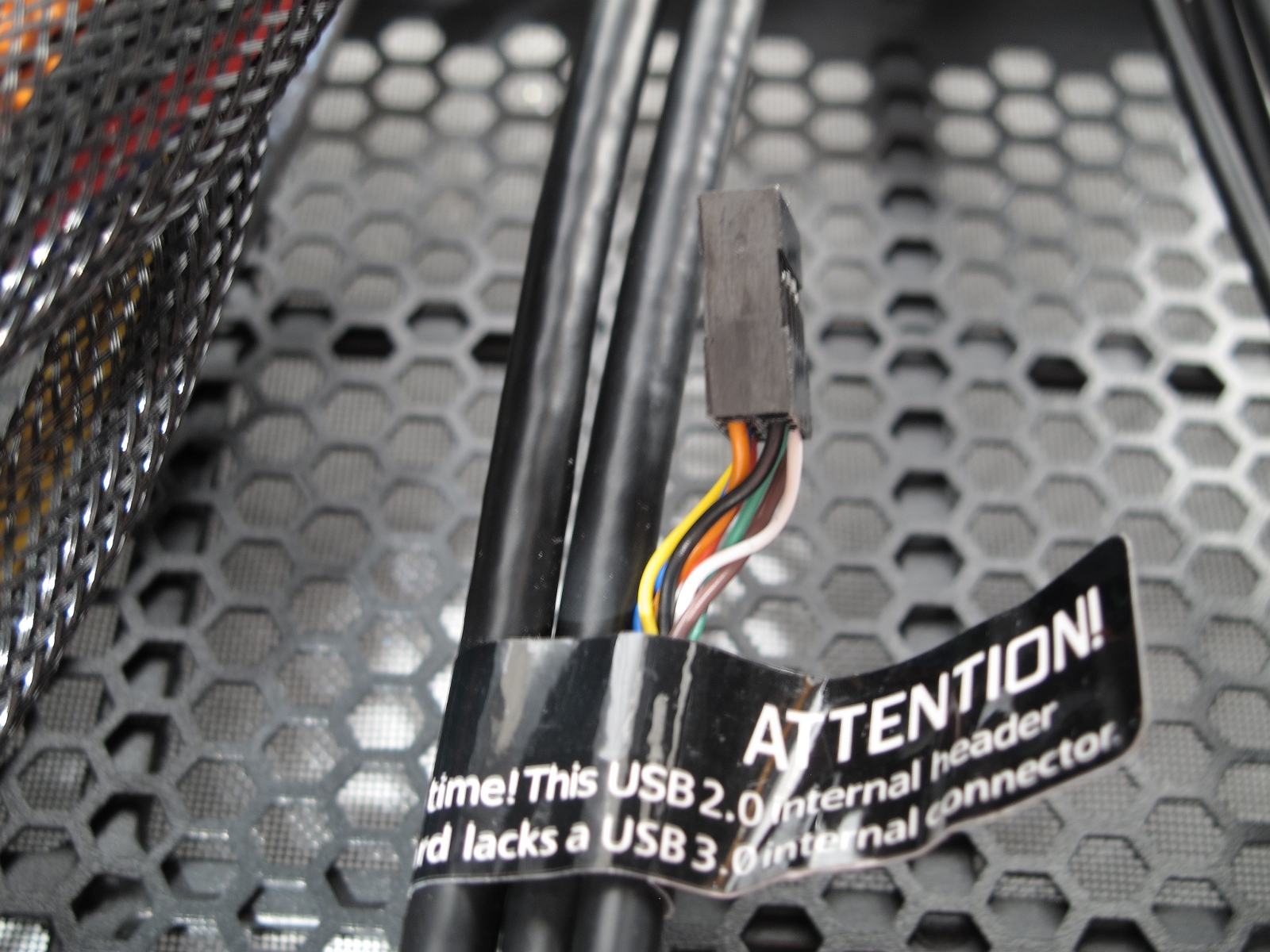Fractal Design Arc Midi R2 Review: Improving On A Classic Case
Fractal Design scored a lot of fans with the simple and elegant architecture of its Arc Midi enclosure. The Arc Midi R2 represents an evolutionary step forward for the company, incorporating a number of refinements that build on the original's strengths.
The Arc Midi R2's Technical Specifications
The Arc Midi R2 features easy-to-access dust filters and a three-speed fan controller featuring a trio of connectors for three-pin fans. There’s a lot of space behind the motherboard for extensive cable management. Moreover, the hard drive cage is flexible in that you can move it or remove it altogether to fit very long or tall components like dual-GPU graphics cards.
Fractal Design gives you more options on the R2 compared to its predecessor. For instance, there are now screw holes to accommodate SSDs in the back of the case. If you aren't going to use a 3.5" hard disk, then you're able to use the rear mounts and pull both drive cages, leaving lots of room for unobstructed airflow.
| Manufacturer | Fractal Design |
|---|---|
| Model Number | Arc Midi R2 |
| Type | Mid Tower |
| Dimensions (HxWxD) | 460 x 230 x 515 mm |
| Weight | 10.7 kg |
| Material | Steel |
| Plastic (front cover, top cover) | |
| Form Factor | ATX, MicroATX, Mini-ITX |
| Bays | 2 x 5.25“ (External) |
| 3 x 3.5“ or 2.5“ (internal, lower drive cage) | |
| 5 x 3.5“ or 2.5“ (internal, upper drive cage) | |
| 2 x 2.5“ (internal, back of the motherboard tray, for SSDs) | |
| PCI Slots | 7 |
| Installed Fans | 1 x 140 mm front (1000 RPM) |
| 1 x 140 mm top (1000 RPM) | |
| 1 x 140 mm back (1000 RPM) | |
| Note that all 140 mm fans can be replaced with 120 mm fans. | |
| Optional Fans | 1 x 140/120 mm Front |
| 2 x 120/140 mm Top | |
| 1 x 120/140 mm Back | |
| Optional Water Cooling | 240 mm Radiator Top |
| 240 mm front radiator (after moving drive cage) | |
| 120 mm bottom radiator | |
| 120 mm back radiator | |
| CPU Cooler | Up to 180 mm |
| Graphics Card | Up to 300 mm (up to 430 mm after removing upper drive cage) |
| Power Supply Unit (PSU) | Up to 310 mm (up to 170 mm if fan installed at bottom of case or after moving drive cage) |
| Cable Management | 26 mm between back of motherboard tray and side wall |
| Price | App. $85 (Street Price) |
A look at the I/O on top of the Arc Midi R2 reveals a few other differences from its predecessor. Instead of two USB 2.0 and one USB 3.0 connectors, Fractal Design's newer enclosure gives you two USB 3.0 connectors. If your motherboard is on the older side and lacks the requisite headers, then a separate USB 2.0 cable can be attached to a corresponding on-board plug. Use the USB 2.0 or 3.0 cable; not both.
The power button has a blue LED that reflects the system's state by lighting up the matching symbol. There's also a red LED on the side that shows hard drive activity. Audio connectors can be attached to AC'97 or HD Audio headers. The reset button is on the left and very small. It’s so small, in fact, that it can only be pressed with a tool. This can be an advantage for new users.
One of the most useful changes from the original Arc Midi to the R2 is its fan control placement. Now it's up front, next to the other lights, ports, and buttons. Previously, it was around back by the PCI slot covers, making it more difficult to reach.
Get Tom's Hardware's best news and in-depth reviews, straight to your inbox.
Current page: The Arc Midi R2's Technical Specifications
Prev Page Fractal Design's Arc Midi R2 ATX Case Review Next Page The Arc Midi R2's Exterior-
f-14 Solution: buy some rubber toilet grommets or faucet washers from your local hardware store price will range from 25 cents to a little under a dollar and the problem is solved.Reply
Some Notes and Recommendations about Replacing the Fans
Let's say everything else about the Arc Midi R2 is ideal for you, and you simply want to replace its fans. -
dish_moose I think a fan that vibrates when pointed down is an inferior product. I had to replace the fan on my Antec 302 for the same reason - drove me crazy. As for beauty over function - I would much rather keep my GPU cool that have a "pretty" side window.Reply
-Bruce -
mouse24 ^ Was it a sleeve bearing fan? If so thats more or less normal due to how that bearing is designed.Reply -
SchizoFrog Who puts a fan in the roof of a case to blow downwards? Surely the roof is best used as an exhaust and it was specifically mentioned about the fan blowing downwards. Personally I think I would be likely to buy a full set of fans so that I can fill all the fan mounts with the same design range and then keep the stock fans as emergency spares.Reply
As for keeping the GPU cool, I don't that is an issue with 2 the fans in the front creating perfectly adequate airflow to keep the GPU cool unless you are using multiple GPUs. Although in time I would probably mod the window and inserting an extra fan there as that isn't a hard job to do. -
cjny71 Regarding the change from a side panel with a mesh vent to a window, I am not sure if this would make much of a difference to GPU cooling. I have the original Fractal Midi and I wanted to isolate noise a bit more, so I swapped the side panels so that the vented one is on the back of the mother board side. I had also installed 1 extra 140 mm fan in the bottom of the case blowing up to draw in cool air underneath. I did this before swapping the side panels. All of my 140 mm fans are turning at 700 rpm. Surprisingly I noticed that in this configuration the GPU was slightly cooler (1-2 C) at idle and under load with the solid panel on the right / GPU side, and the noise seemed a little lower. CPU temps did not change. I would have to guess that the mesh hole provides an escape port for air and the GPU fan has to work harder.Reply
Heat Sources: i5-3570K @ 4.4 GHz, Hyper 212 EVO, EVGA GTX 560Ti @ 900 MHz, 3 WD Cavier Black HD -
RazberyBandit The Arc Midi 2 and Define R4 use an identical core case design. The only design differences are found in the front and top panels. (Both are mesh in the Arc Midi 2, while the Define R4 has a front door and sound-proof material fan opening covers for the top fan openings.)Reply
With Define R4's often available for roughly $85 (on sale) and Arc Midi 2's typically about $65 online, I find the $20 additional cost for the sound-proofing included in the Define R4 models a very worthwhile investment. -
InvalidError Reply
Does your GPU have its fan at one end of the card and exhaust directly outside through the rear bracket? If it does, the reason you see lower GPU temps is likely that the slightly more positive (or slightly less negative) pressure in the case from going solid makes the GPU's HSF a little more efficient at shoving warm air out of the case. Cards with "mid-mount" fans may also benefit from this due to slightly increased vertical airflow between the GPU's top edge and case panel carrying warm air up through the case faster.11627141 said:Surprisingly I noticed that in this configuration the GPU was slightly cooler (1-2 C) at idle and under load with the solid panel on the right / GPU side, and the noise seemed a little lower.
That is what I like to call structured airflow. Placing fans in the most effective places and shutting off meshed areas that allow air to escape without contributing to net cooling can achieve superior results with much less meshed area and fewer fans. -
basketcase87 Reply11626775 said:I think a fan that vibrates when pointed down is an inferior product. I had to replace the fan on my Antec 302 for the same reason - drove me crazy. As for beauty over function - I would much rather keep my GPU cool that have a "pretty" side window.
-Bruce
Side fans don't always help GPU temps, they can even hurt temps in some cases by interfering with the airflow from the GPU fan. It really depends on the case and GPU (and whether or not the front intakes do anything for the GPU), but saying categorically that having an intake there will improve GPU temps is certainly not true. -
fat_panda It deserves a "Smart Buy" Award. Arc Midi R2 offers much more for the price than the competition while often being on sale for $65.Reply


